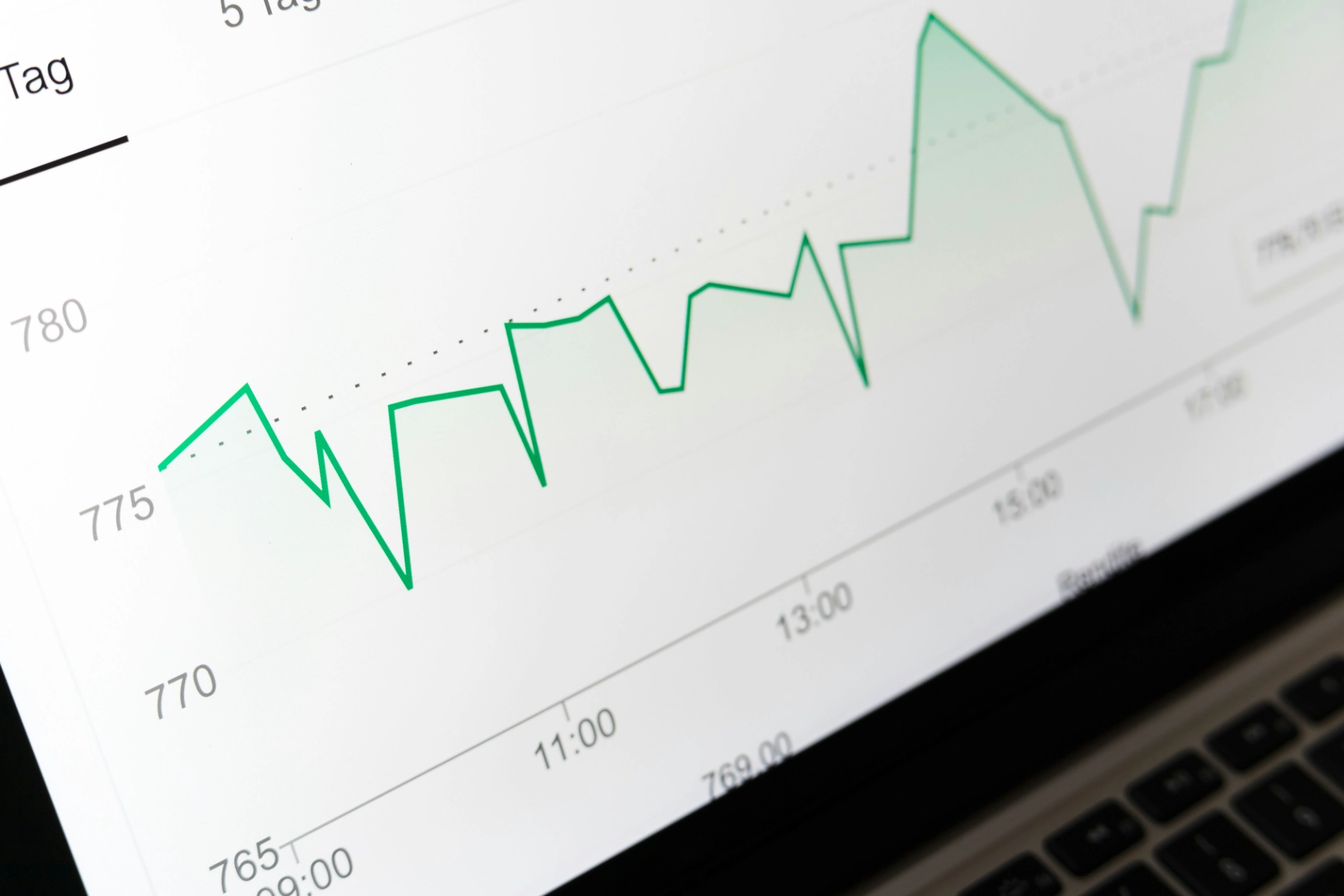In a nutshell:
- Accurate sales predictions are crucial for business growth.
- Key features for predictive accuracy include historical data analysis, machine learning algorithms, integration with CRM and ERP systems, and customizable forecasting models.
- Evaluating sales forecasting tools should consider scalability, user interface, data security, total cost of ownership, ROI, and vendor support.
- Choosing the right tool can drive business success and a competitive edge.
Ever wished you could take the guesswork out of sales planning? Welcome to the world of sales forecasting tools! These tools crunch numbers faster than you can say "quarterly targets," and they can spot trends that might slip past even the keenest human eye.
Accurate sales predictions are fundamental for businesses to optimize resource allocation and achieve growth. Sales forecasting tools serve as valuable instruments in this process. Today's data-rich environment demands technology for reliable and accurate forecasts. Data leaders evaluating sales forecasting tools should prioritize features that enhance predictive accuracy.
In this post, we're pulling back the curtain on these powerful tools transforming how businesses plan for the future. We explore the inherent advantages of this approach, outline key features for tool selection, and provide a structured framework for evaluating various solutions.
Get the knowledge needed to make informed technology investment decisions that maximize the predictive accuracy of your sales forecasts. Let's explore how these smart solutions can turn your sales strategy into a data-driven work of art!
Key Features for Predictive Accuracy
Choosing the right sales forecasting tool can seem overwhelming, but focusing on some key features can ease the process. Here are the essential traits that enhance the predictive accuracy of these tools.
Historical Data Analysis
Sales forecasting tools should be capable of efficiently capturing and analyzing historical sales data. Such data, including past sales figures, customer purchase histories, and seasonal trends, serve as the foundation for accurate forecasting. By examining these various data aspects, the system can identify patterns and trends to predict future sales.
Advanced analytics is another essential feature for identifying trends and patterns in historical sales data. Technologies like predictive analytics and data mining can dive deeper into the data, revealing hidden correlations and trends that can further improve the accuracy of sales forecasts.
In some instances, historical sales data may be affected by unusual circumstances, such as promotional events, economic downturns, or product shortages. Sales forecasting tools should be able to identify these anomalies and adjust the data accordingly. This process ensures that the predictive model is not influenced by atypical data points, enhancing the forecast's accuracy.
Sales forecasting tools should also handle missing data in the historical records. This could be due to system errors, incomplete records, or changes in data collection methods over time. The tools should be able to intelligently fill these gaps without skewing the overall trend, ensuring a reliable foundation for future sales prediction.
Machine Learning Algorithms
Modern sales forecasting tools often use machine learning (ML) algorithms for predictive modeling. These algorithms can analyze complex datasets, learn from the data, and make predictions based on patterns they recognize. More importantly, as new data is introduced, ML algorithms can adjust and refine the forecast models, continually improving accuracy over time.
ML algorithms don’t simply improve the accuracy of sales forecasting. They also help automate the entire process. The automation feature can save precious time, allowing your team to focus on implementing strategies based on forecasts rather than on data crunching.
Beyond improving accuracy and automation, machine learning algorithms in sales forecasting tools can also help segment customers based on their behavior. This can lead to more targeted marketing campaigns, enhanced customer service, and ultimately increased sales.
These algorithms can also help uncover untapped markets or niches by identifying patterns and connections that may not be visible to the human eye. This ability to derive meaningful insights from complex data sets is yet another reason why machine learning is a game-changer in predictive sales forecasting.
Integration With CRM and ERP Systems
Synchronizing data from customer relationship management (CRM) and enterprise resource planning (ERP) systems is pivotal for obtaining a complete view of the sales environment. Sales forecasting tools should seamlessly integrate with these systems to draw real-time data and reflect the most current sales scenario.
The integration also allows the tool to use valuable information from these systems, such as customer behavior, sales pipelines, and inventory levels, to refine the forecasting models and improve accuracy.
Integrating CRM and ERP systems also provides sales forecasting tools with visibility into factors such as ongoing sales activities, inventory turnover, pending orders, and payment history. This holistic view of the organization's operations can help the tool provide a more precise and comprehensive sales forecast.
The integration also ensures that all departments within the organization work with the same data, fostering collaboration and alignment toward shared objectives.
Customizable Forecasting Models
A one-size-fits-all approach doesn't work in sales forecasting. That’s why the ability to create customizable forecasting models is key. The tool should be flexible enough to adapt to your specific industry, market conditions, and business goals, leading to more accurate forecasts.
Along with customization, your sales forecasting tool should also be adaptable to variable business scenarios. Whether it's predicting sales for a new product launch, estimating the effects of a marketing campaign, or identifying the impact of macroeconomic changes, the tool should be capable of adjusting the forecast models accordingly.
Evaluating Sales Forecasting Tools
Identifying features that enhance predictive accuracy is only the initial step. A comprehensive evaluation of sales forecasting tools requires a multi-faceted approach. Here are key parameters to consider during this process:
Scalability and Performance
Scalability is a fundamental aspect for organizations handling significant amounts of sales data. The chosen sales forecasting tool should efficiently manage vast datasets without compromising performance. Remember, a highly scalable tool can maintain accuracy and speed even as your business grows and data complexity increases.
Real-time sales forecasting is a game-changer in today's dynamic business environment. Immediate insights into sales trends can help businesses react more quickly and make informed decisions. This explains why the sales forecasting tool should meet high-performance benchmarks to ensure real-time forecasting, fast data processing, and immediate availability of results.
User Interface and Ease of Use
Your sales forecasting tool should have an intuitive user interface with clear, comprehensive dashboards and reporting tools. These features can help data leaders and other team members understand and interpret the forecasts easily, leading to quicker decision-making and strategy implementation.
Aside from the technical aspects, consider how easy it will be for your team to adopt and use the tool. Training should be straightforward, and the tool itself should be intuitive, even for non-technical users. Remember, the most sophisticated tool won't add value if your team finds it too challenging to use.
Data Security and Compliance
Data security is non-negotiable when selecting the right sales forecasting tools. The tool of choice must provide robust security features to protect sensitive sales data from breaches and unauthorized access. Look for features like data encryption, user authentication, and access controls.
Depending on your industry, you may be subject to specific data security and privacy regulations. To avoid legal issues and penalties, make sure the sales forecasting tool you choose complies with such regulations. Look for compliance certificates from recognized authorities like ISO/IEC 27001, which demonstrate a vendor's commitment to robust data security practices. Additionally, consider the tool's disaster recovery capabilities to ensure business continuity in case of unforeseen disruptions.
Considerations for Technology Investments
Data leaders evaluate various sales forecasting tools, but it's equally smart to consider some practical aspects related to technology investments. These factors can influence the overall effectiveness, usability, and cost-effectiveness of the chosen tools.
Total Cost of Ownership
Any technology investment should start with a clear understanding of the total cost of ownership. This includes the initial purchase or license fees, ongoing expenses like updates and maintenance, and potential training or support services costs. A cost-effective solution does not necessarily mean the cheapest one. Instead, it should deliver the required functions and performance at a reasonable price.
While considering costs, looking at the potential return on investment (ROI) from improved predictive accuracy is also useful. For example, the cost savings from accurate demand forecasting, reduced stockouts or overstocks, and rationalized sales efforts can offset the expenses of investing in advanced sales forecasting tools.
Your decision to invest in a sales forecasting tool should not be solely determined by the upfront price. A more comprehensive way to assess the cost is by calculating the total cost of ownership (TCO), a financial estimate that includes the initial purchase price and the direct and indirect costs over the tool's lifecycle.
The initial investment may involve purchasing or licensing fees, while the ongoing costs might include software updates, maintenance fees, and user training programs. You must factor in potential costs for support services, upgrades, and possible system downtime.
Evaluating the TCO helps you discern if your chosen tool is cost-effective in the long run. Remember, an inexpensive solution may carry hidden costs that could accumulate over time. On the other hand, a pricier tool may prove to be a better investment if it provides superior features, performance, and longevity.
Return on Investment (ROI)
When contemplating the cost, it's also beneficial to consider the potential return on investment (ROI) from improved predictive accuracy. For instance, accurate forecasting can lead to cost savings from reduced stock-outs and overstocks, streamlined sales efforts, and better allocation of resources.
By weighing these potential savings against the total investment, you can estimate the ROI of the chosen sales forecasting tool. This can provide a clear perspective on the financial viability of the investment and how long it will take to recoup the costs.
Vendor Support and Roadmap
Vendor support can be a critical factor when choosing a sales forecasting tool. A responsive vendor can provide timely technical assistance, resolve issues, and help you fully leverage the tool's capabilities. Check for availability of support services, including maintenance, updates, and troubleshooting.
Also, consider the vendor's product roadmap. It is best to choose a vendor with a clear plan for future enhancements and updates to their offerings. This approach ensures that your chosen tool will remain relevant and effective in the future, adjusting to evolving business scenarios and technological advances.
Remember, your relationship with the vendor doesn't end with the purchase. It's a long-term commitment that can profoundly affect the utility and effectiveness of your sales forecasting tool. Therefore, you should choose a vendor demonstrating a clear commitment to customer success.
The choice of a sales forecasting tool should be based not only on its predictive accuracy features but also on factors like total cost of ownership and the vendor's support and roadmap. By giving equal importance to these considerations, data leaders can make a more informed and holistic decision about their technology investment in sales forecasting tools.
Bottom Line
Choosing and investing in the right sales forecasting tools can significantly enhance the predictive accuracy of your forecasts, inform strategic decision-making, and ultimately drive business success. However, predictive accuracy is not the only factor to consider. While features like historical data analysis, machine learning algorithms, integration with CRM and ERP systems, and customizable forecasting models are key for accuracy, the tool’s scalability, user interface, ease of use, and data security features are equally important.
Be sure to also factor in practical considerations like total cost of ownership, potential for ROI, and the level of support the vendor provides. These aspects not only influence the overall effectiveness and usability of the tool but can also affect its cost-effectiveness.
Data leaders tasked with selecting sales forecasting tools must take a holistic approach, considering the range of features that drive predictive accuracy, along with the tool’s scalability, user interface, security features, and cost. By doing so, they can choose a tool that not only meets their forecasting needs but is also a sound investment.
Unlock Sales Forecasting Potential With Pecan AI
Exploring different sales forecasting tools and understanding their key features is the first step to increasing predictive accuracy, improving operational efficiency, and driving overall business growth. With the right tool, businesses can make informed decisions that heighten their competitive edge, delight customers, and create a resilient, future-forward organization.
Pecan AI empowers businesses to achieve superior sales forecasting.Our team of experts can help you leverage our cutting-edge, automated predictive modeling platform to deliver accurate and reliable forecasts, keeping you ahead of the curve.
Get a demo today to learn how Pecan AI can help elevate your sales forecasting capabilities.









